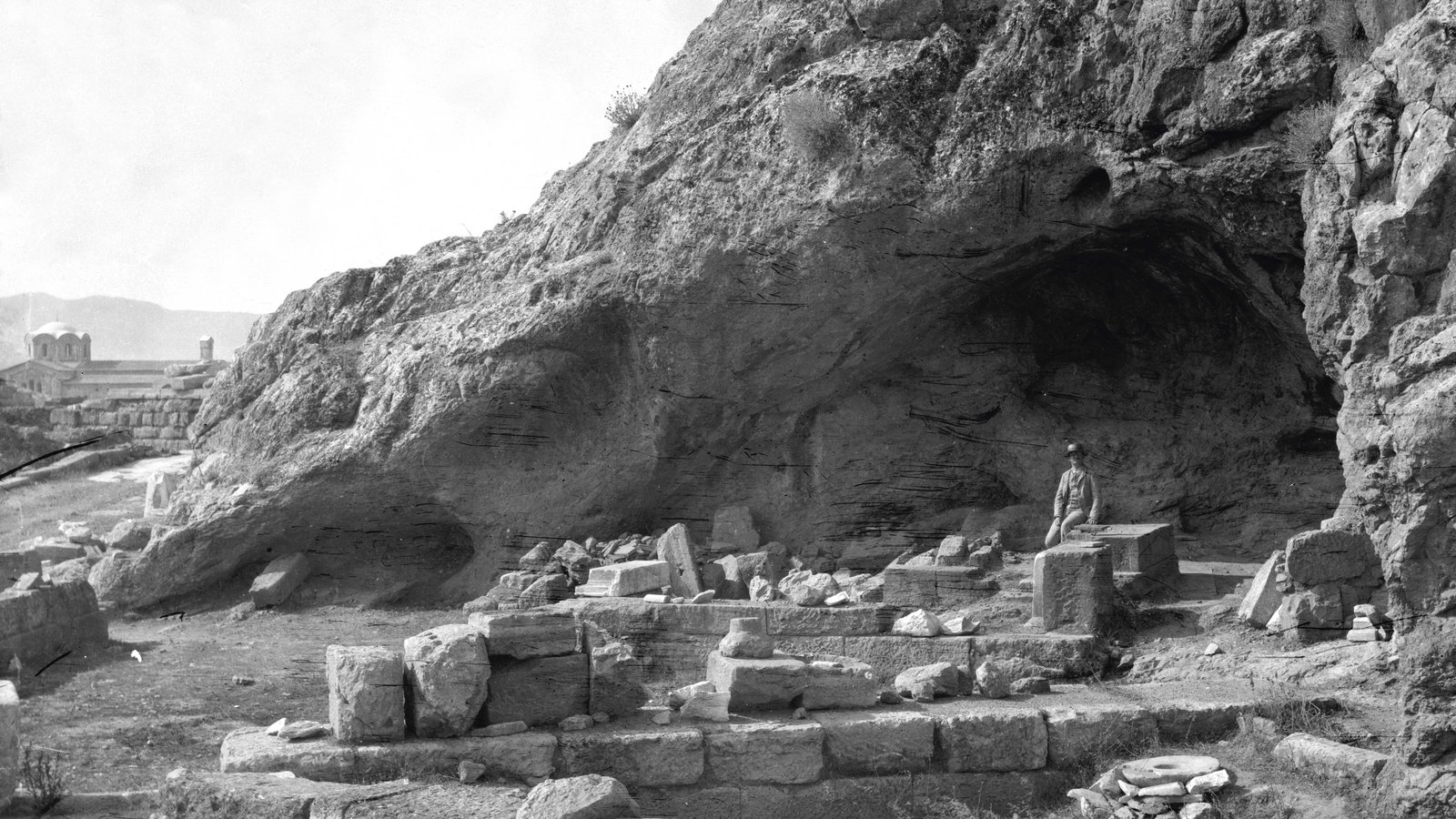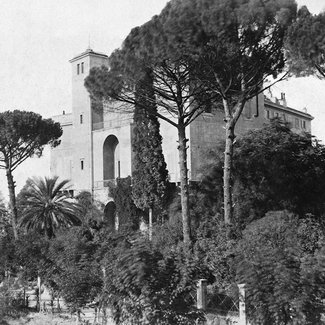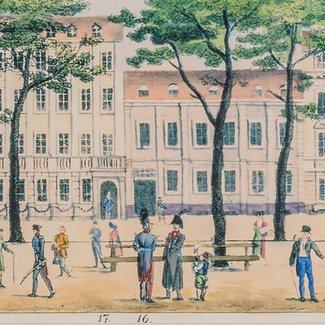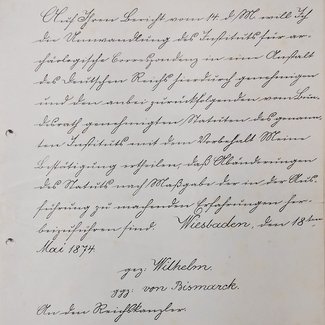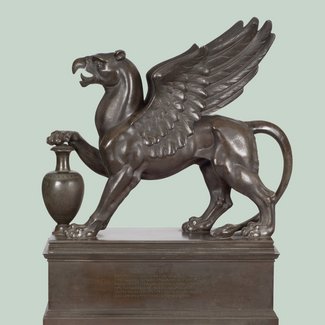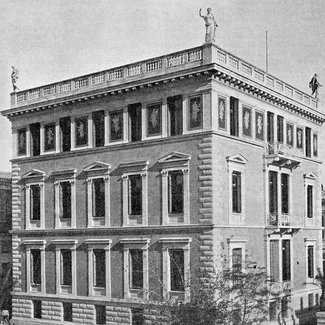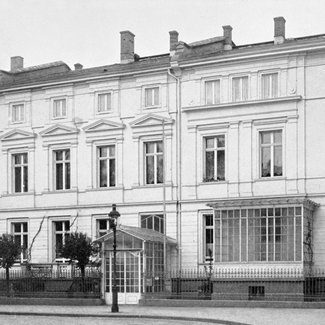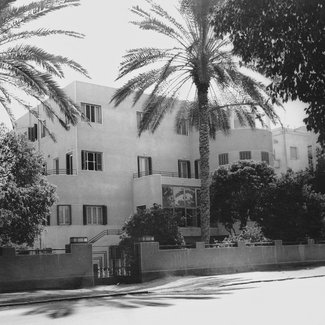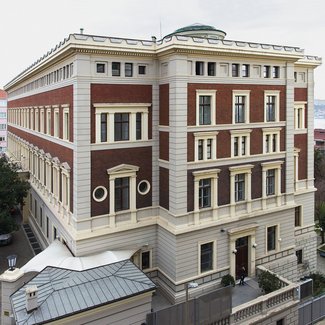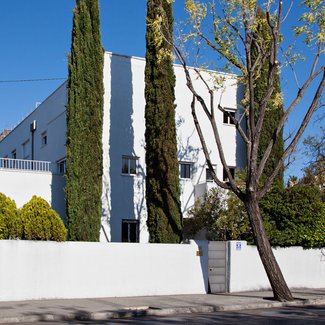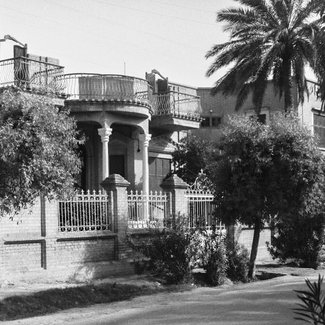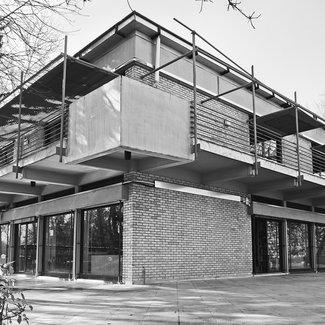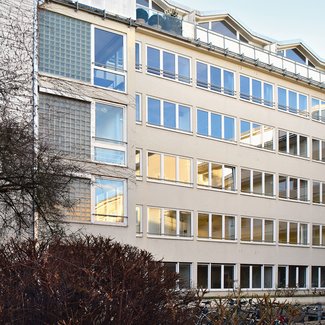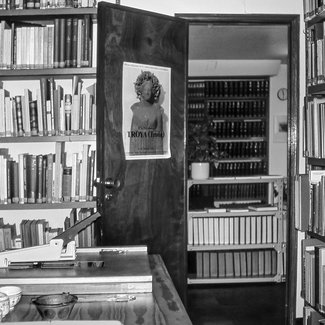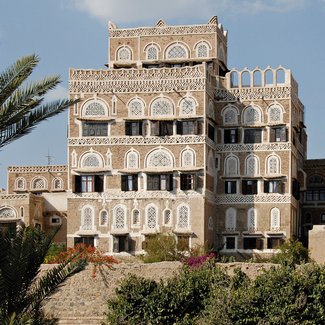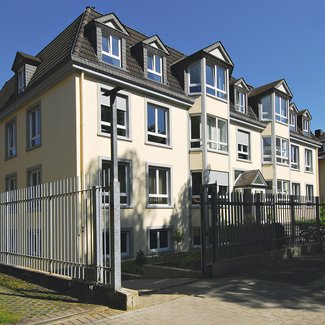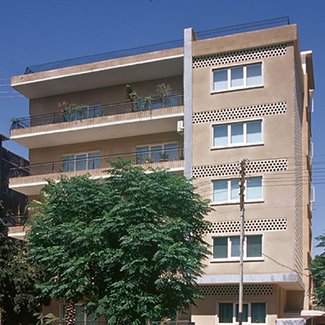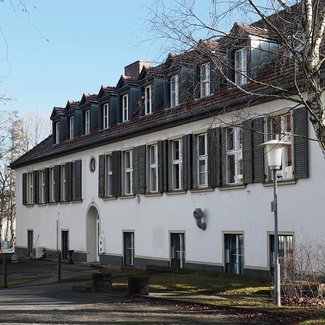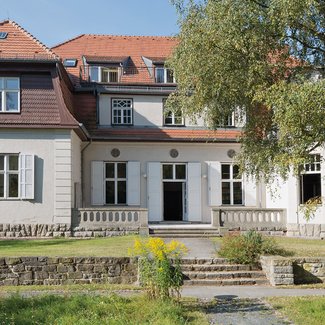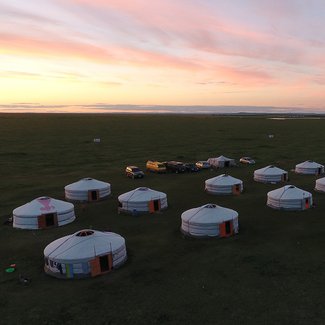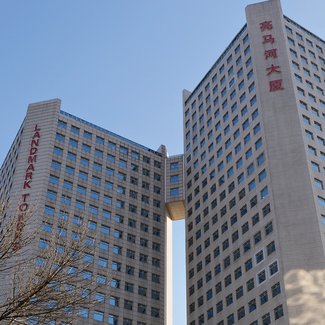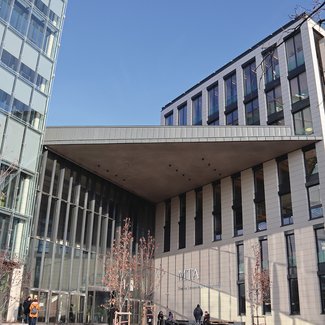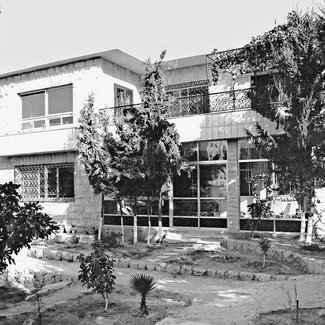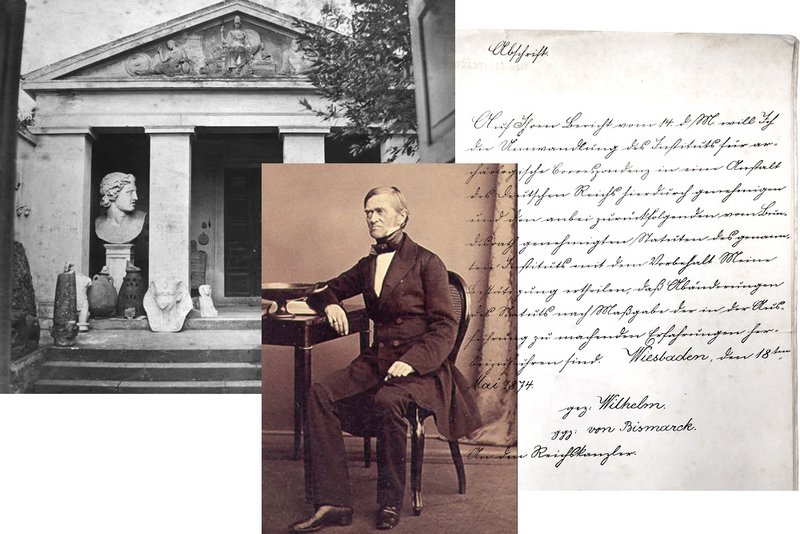
Das erste Institutsgebäude auf dem Kapitol in Rom, Eduard Gerhard, Kaiserliches Edikt von 1871 (v.l.) © DAI // DAI
FOUNDING HISTORY
The foundation stone of the German Archaeological Institute was laid in Rome almost 200 years ago. On 21 April 1829, a circle of friends, scholars, artists, and diplomats founded the Instituto di Corrispondenza Archeologica to disseminate and carry out research on the monuments of ancient art, epigraphy, and topography. Today, the DAI looks back at an eventful history evolving at numerous locations whilst closely linked to historical, political, and economic transformations.
Chronicle of the Locations
Porträts von Präsident:innen © DAI // Gestaltung: Tanja Lemke-Mahdavi
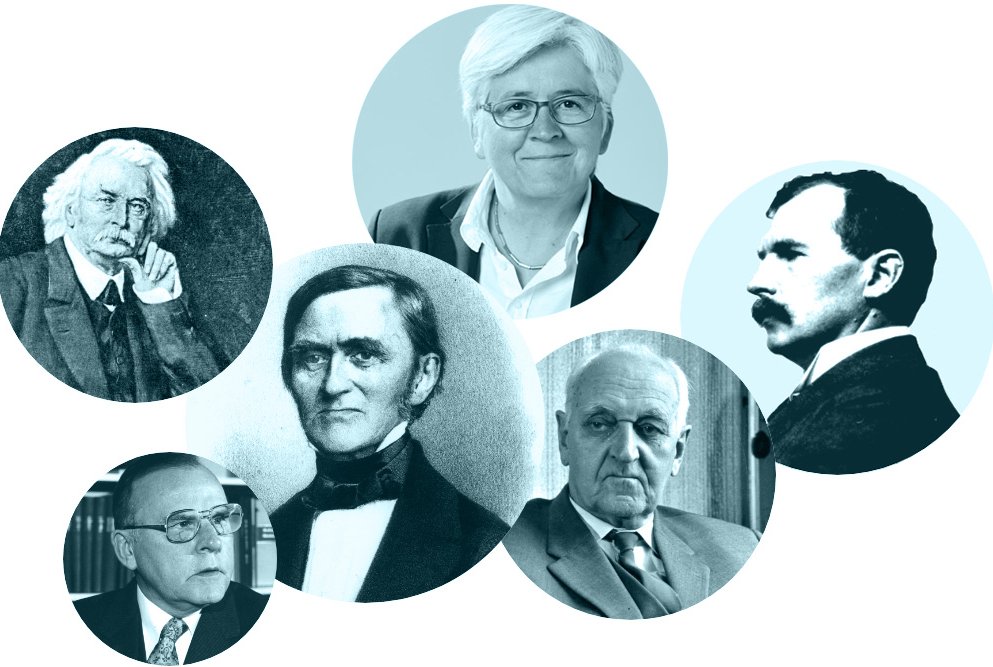
PRESIDENTS AND SECRETARIES
The history of the management of the Instituto di Corrispondenza Archeologica and the German Archaeological Institute is one of terminological diversity. The designations presidents, secretaries, and secretaries-general have been supplanting each other over the years. It was only in the run-up to the centenary anniversary in 1929 that the title president became binding. The individual branch offices today are besides supervised by directors.
190 years of DAI in a minute
From Edurad Gerhard's trip to Italy in 1820, to the first use of the griffin as a logo, to the foundation in Rome in April 1829. The history of the company is succinctly and vividly summarised in this video, created for the 190th anniversary in 2019.
Zeichnung verschiedener Antiken auf dem Titelblatt der ersten Ausgabe der Monumenti inediti 1829 © DAI // Unbekannt
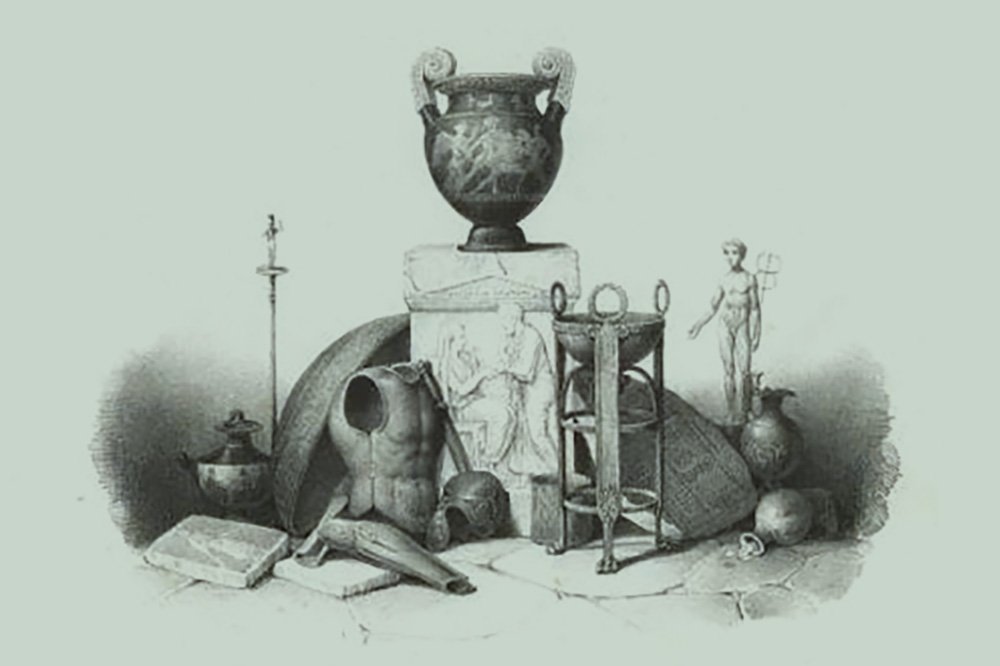
THE DAI's HISTORY OF PUBLICATIONS
Already in 1829, the year of its founding, the institute got underway on an intensive publishing activity. Today, it supervises 14 journals, around 100 series, and various monographic works and consequently forms one of the world's largest platforms for modern archaeological research.
Winckelmann-Medaille © DAI // Irmgard Wagner
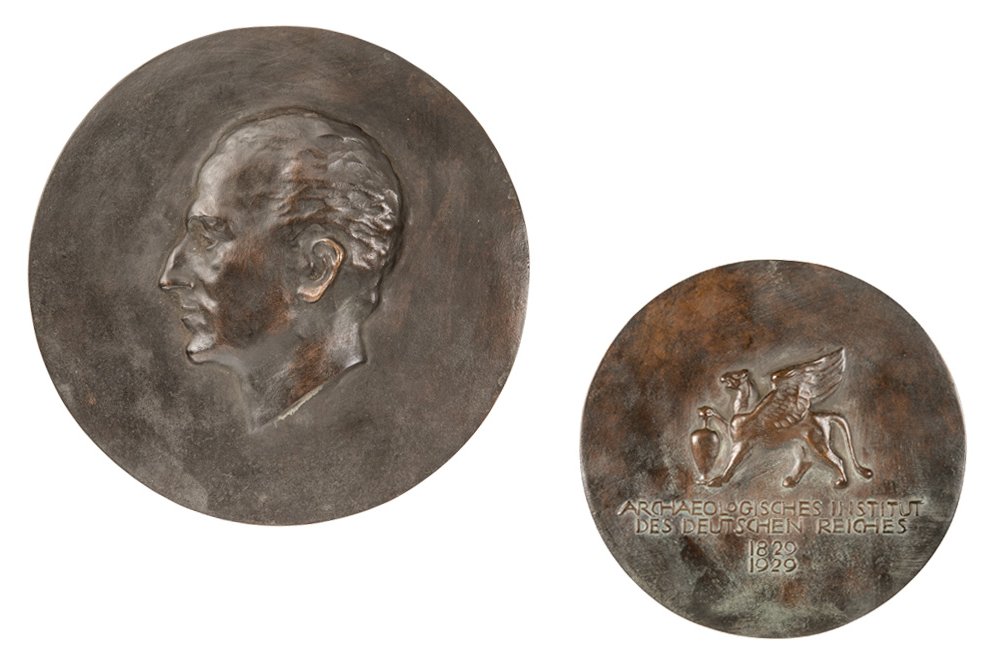
SPECIAL HONOURS: THE WINCKELMANN MEDAL
At the occasion of its centenary celebrations in 1929, the institute's honorary member, Johann II Prince of Liechtenstein, established the commemorative Winckelmann Medal for special honours. The medal was designed by Edwin Scharff (1887-1955), a sculptor working in Berlin. Since 1929 the medal is awarded first and foremost to cities and institutions for special achievements in archaeology.
The laureates so far have been:
1929 Gustav Adolf, Crown Prince and later Gustav VI Adolf, King of Sweden
1929 The city of Rome
1939 The Greek Archaeological Society in Athens
1969 The city of Frankfurt am Main
1974 The Acropolis Museum in Athens
1974 The National Archaeological Museum in Athens
1979 The City of Berlin
1979 The Austrian Archaeological Institute
1979 The Pontificia Accademia Romana di Archeologia
2004 The Archaeological Institute of America
